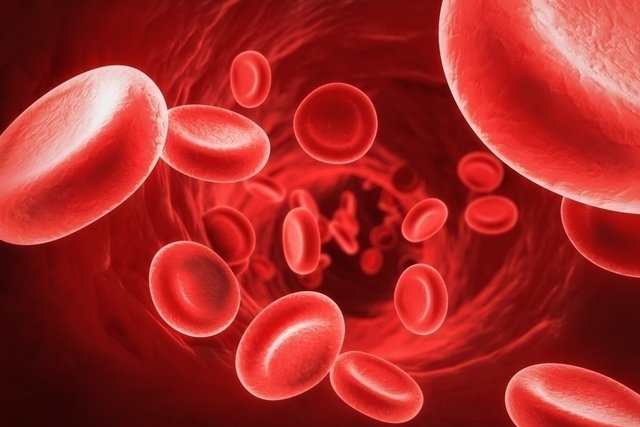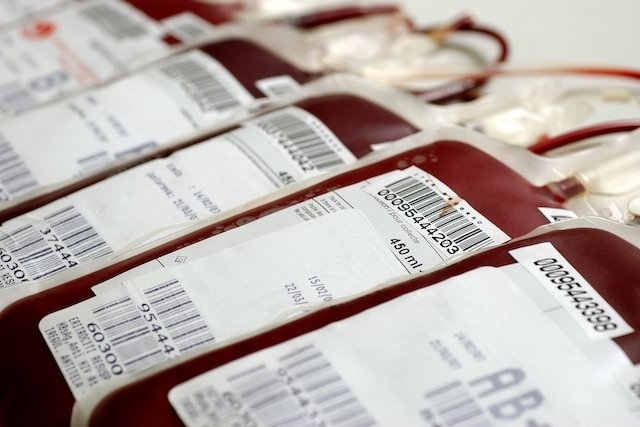Thalassemia is a type of anemia that has a genetic cause and is characterized by defects in the production of hemoglobin, which is responsible for transporting oxygen to the tissues, causing symptoms such as paleness, fatigue, weaker immunity, changes in growth and, in cases more serious, changes in the spleen and liver, for example.
The diagnosis of thalassemia must be made by the doctor by carrying out specific blood tests, such as hemoglobin electrophoresis, which helps to differentiate the types of thalassemia.
Thalassemia is a genetic and hereditary disease, and is not contagious or caused by nutritional deficiencies, however, in the case of some types of thalassemia, treatment may involve an appropriate diet for the case in order to promote symptom relief.

Main symptoms
The main symptoms of thalassemia are:
- Pallor;
- Fatigue;
- Irritability;
- Weak immune system and vulnerability to infections;
- Growth delay;
- Short or labored breathing;
- Lack of appetite.
Furthermore, over time the disease can also cause problems with the spleen, liver, heart and bones, as well as jaundice, which is the yellowish color of the skin and eyes.
The intensity of symptoms may vary according to the type of thalassemia, and consultation with a general practitioner or hematologist is essential to make a diagnosis.
How to confirm the diagnosis
The diagnosis of thalassemia is made through blood tests, such as a blood count, in addition to hemoglobin electrophoresis, which aims to assess the type of hemoglobin circulating in the blood. Understand how it is done and what the result of hemoglobin electrophoresis means.
Genetic tests can also be carried out to evaluate the genes responsible for the disease and differentiate the types of thalassemia.
Caused by thalassemia
Thalassemia is a disease caused by genetic changes that interfere with the formation of globin chains, which are structures that form hemoglobin and are linked to iron, promoting the uptake of oxygen.
Globin chains can be alpha, beta, gamma, delta, epsilon and zeta, undergoing changes throughout a person’s development. After birth, throughout the child’s development, it is possible to observe a greater prevalence of alpha and beta chains, so that adults have 4 globin chains: 2 alpha and 2 beta.
However, due to genetic changes, it is possible that there is a change in the synthesis process of these chains, giving rise to different types of anemia, which can be more or less severe.
Types of Thalassemia
Thalassemia can be classified into some main types according to the globin chain that was affected, and there may be a reduction or absence of the alpha or beta chains.
1. Alpha thalassemia
It is caused by a change in the alpha-globin molecule of blood hemoglobin, and can be divided into:
- Alpha thalassemic trait: is characterized by mild anemia due to the reduction of just one alpha-globin chain;
- Hemoglobin H disease: which is characterized by the absence of production of 3 of the 4 alpha genes related to the alpha globin chain, being considered one of the serious forms of the disease;
- Bart’s Hemoglobin Fetal Hydrops Syndrome: It is the most serious type of thalassemia, as it is characterized by the absence of all alpha genes, resulting in the death of the fetus during pregnancy.
It is important that the type of thalassemia is identified through tests so that treatment can be started and complications can be prevented.
2. Beta thalassemia
It is caused by a change in the beta-globin molecule of blood hemoglobin, and can be divided into:
- Thalassemia Minor (Minor) or Beta Thalassemia Trait: which is one of the mildest forms of the disease, in which the person does not feel symptoms, and is therefore only diagnosed after hematological tests. In this case, it is not recommended to carry out specific treatment throughout life, but the doctor may recommend the use of a folic acid supplement in order to prevent mild anemia;
- Beta-Thalassemia Intermediate: causes mild to severe anemia, and the patient may need to receive blood transfusions sporadically;
- Beta thalassemia major or major: It is the most serious form of beta thalassemia, as there is no production of beta globin chains, making it necessary for the patient to receive regular blood transfusions to reduce the degree of anemia. Symptoms begin to appear in the first year of life, being characterized by paleness, excessive tiredness, drowsiness, irritability, prominent facial bones, poorly aligned teeth and a swollen belly due to enlarged organs.
In cases of thalassemia major, growth may be slower than normal, causing the child to be shorter and thinner than expected for their age. Furthermore, in patients who receive blood transfusions regularly, the use of medications that prevent excess iron in the body is normally indicated.
How the treatment is carried out
Thalassemia treatment must be guided by a doctor and normally varies according to the severity of the disease. In milder cases of thalassemia, where the person does not show signs or symptoms of the disease, regular follow-up with the doctor may only be recommended.
However, it is common for the doctor to recommend the use of folic acid supplements to promote relief and prevent symptoms and stimulate the production of blood cells. In addition, dietary changes may also be recommended, which should be guided by a nutritionist, to help combat symptoms. See how to follow the thalassemia diet.
In some cases, it may also be necessary to undergo a blood transfusion, as advised by the doctor, and a lifelong transfusion may be indicated every 2 to 4 weeks, in the most severe cases.
Furthermore, in the case of thalassemia major, which is the most severe form of thalassemia, it is common for the person to have excess iron in the blood and, therefore, the doctor may also prescribe iron chelating medications, which bind to iron in the blood. organism and prevent its excess. These medications can be given directly into a vein 5 to 7 times a week or through tablets.
Possible complications
Complications of thalassemia only arise in intermediate and severe forms of the disease, especially when it is not treated properly. In the intermediate form of the disease, complications can be:
- Deformities in bones and teeth;
- Osteoporosis;
- Gall stones;
- Leg ulcers, due to lack of oxygen in the extremities of the body;
- Kidney problems;
- Increased risk of thrombosis;
- Heart problems.
In severe cases, complications such as deformities in bones and teeth, enlarged liver and spleen and heart failure may arise.

Sign up for our newsletter and stay up to date with exclusive news
that can transform your routine!
Warning: Undefined array key "title" in /home/storelat/public_html/wp-content/plugins/link-whisper-premium/templates/frontend/related-posts.php on line 12
Warning: Undefined array key "title_tag" in /home/storelat/public_html/wp-content/plugins/link-whisper-premium/templates/frontend/related-posts.php on line 13




